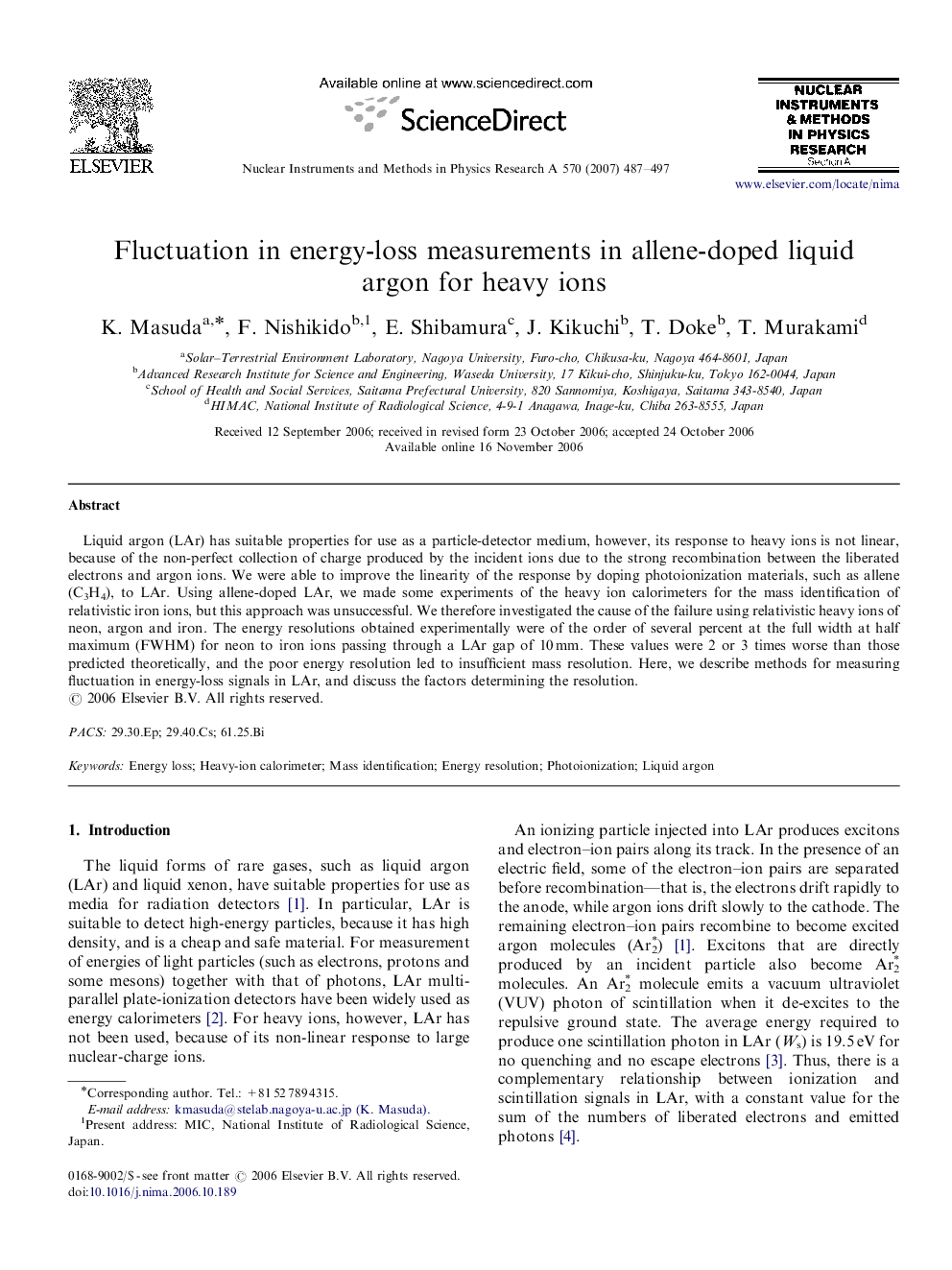| Article ID | Journal | Published Year | Pages | File Type |
|---|---|---|---|---|
| 1832128 | Nuclear Instruments and Methods in Physics Research Section A: Accelerators, Spectrometers, Detectors and Associated Equipment | 2007 | 11 Pages |
Abstract
Liquid argon (LAr) has suitable properties for use as a particle-detector medium, however, its response to heavy ions is not linear, because of the non-perfect collection of charge produced by the incident ions due to the strong recombination between the liberated electrons and argon ions. We were able to improve the linearity of the response by doping photoionization materials, such as allene (C3H4), to LAr. Using allene-doped LAr, we made some experiments of the heavy ion calorimeters for the mass identification of relativistic iron ions, but this approach was unsuccessful. We therefore investigated the cause of the failure using relativistic heavy ions of neon, argon and iron. The energy resolutions obtained experimentally were of the order of several percent at the full width at half maximum (FWHM) for neon to iron ions passing through a LAr gap of 10Â mm. These values were 2 or 3 times worse than those predicted theoretically, and the poor energy resolution led to insufficient mass resolution. Here, we describe methods for measuring fluctuation in energy-loss signals in LAr, and discuss the factors determining the resolution.
Keywords
Related Topics
Physical Sciences and Engineering
Physics and Astronomy
Instrumentation
Authors
K. Masuda, F. Nishikido, E. Shibamura, J. Kikuchi, T. Doke, T. Murakami,
